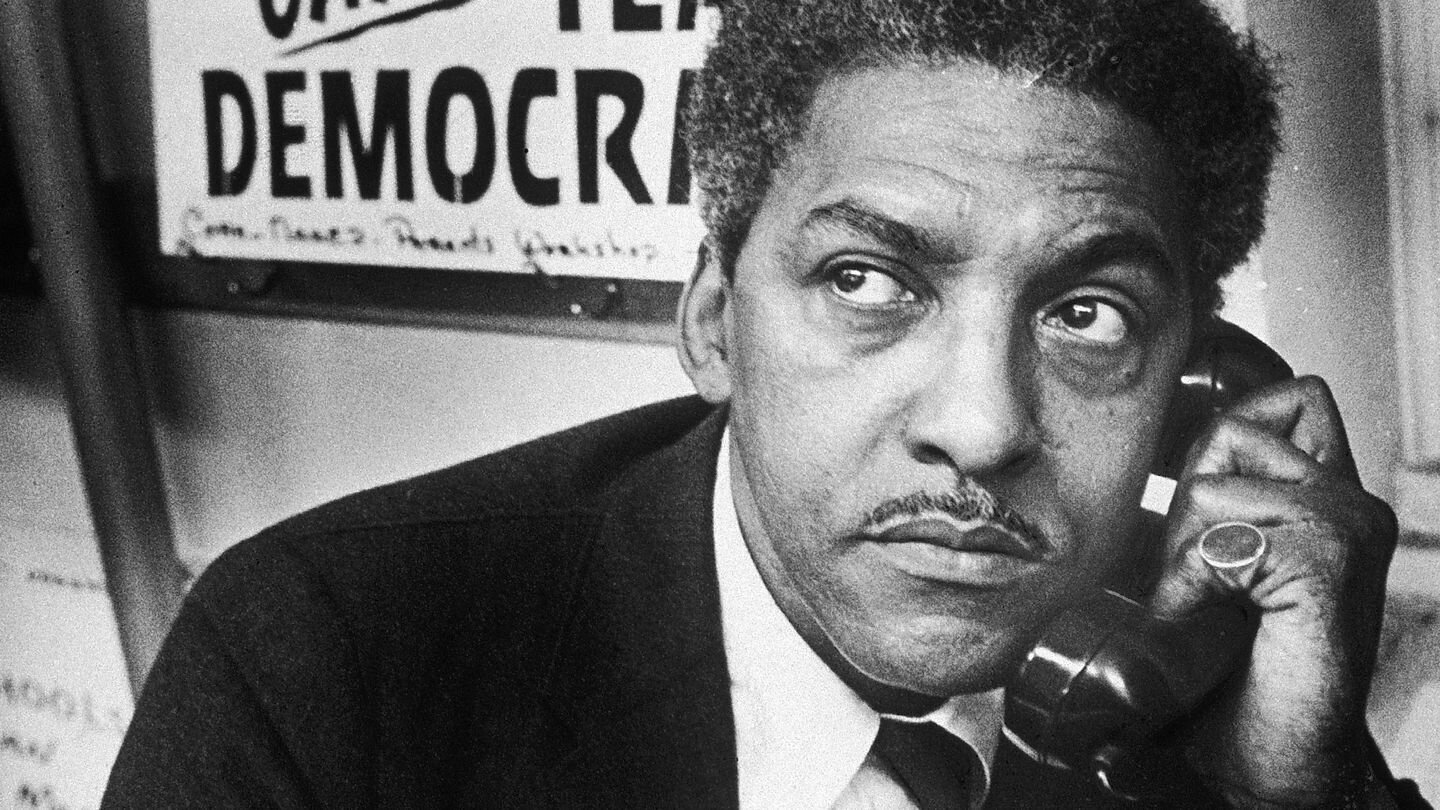Bayard Rustin: Civil Rights Organizer & Activist
Bayard Rustin (1912-1987)
An American Leader in Civil rights, Nonviolence and Gay Rights
Bayard Rustin
Bayard Rustin was born in West Chester, Pennsylvania, in March of 1912. His grandmother was a member of the NAACP, and W.E.B. Du Bois and James Weldon Johnson were pretty constant guests at his grandparents home. This exposure gave him the desire to start campaigning at a very young age. He knew was gay at a very young age and when he told his grandmother that he liked to spend time with boys more than girls, she didn’t hesitate and just replied with “I suppose that’s what you need to do.”
Rustin attended Wilberforce University and Cheyney State Teachers College (now Cheyney University). He then moved to New York in 1937 and attended City College. He joined the Young Communitist League (YCL) because he thought they were committed to social justice. As it turns out, the YCL started to shift their focus away from the civil rights movement in 1941 so he left.
After leaving the YCL, Justin became youth organizer of the proposed 1941 March on Washington, by A. Philip Randolph, the trade union leader. He then joined the Fellowship of Reconciliation (FOR) and co-founded Congress of Racial Equality (CORE). His position was to lead workshops about nonviolent action through his field secretary and race relations director jobs with the organizations. He refused to be drafted and spent more than 2 years in jail as a conscientious objector.
Then in 1947, he was arrested again for CORE’s “Journey of Reconciliation” also known as the “First Freedom Ride.” It was to test the Supreme Court's rulings on segregation on interstate bus travel. After spending 22 days in a chain gang while in prison, he later published a report in several newspapers that led to reform of prison chain gangs.
Rustin started to travel the world and in 1948 he learned about the Gandhian nonviolence philosophy in India. In 1953, he went on a sponsored trip to Africa through FOR and the American Friends Service Committee to work on West African independence movements. But sadly he was arrested and told to resign because he was homosexual.
Rustin became Dr. Martin Luther King Jr’s advisor during the Montgomery bus boycott and he published the “Montgomery Diary” in 1956. He provided Dr. King with lots of knowledge on nonviolent tactics and ideas. Dr. King knew Rustin’s background was controversial because he was part of a communist group and also homosexuality was still extremely frowned upon but Dr. King saw his hard work, strategizing and organizational skills. He began to act as Dr. King’s nonviolence strategist, proofreader, ghostwriter, philosophy teacher and more.
Rustin played a major part in developing the Southern Christian Leadership Conference (SCLC) to unite black leaders in the South. He is also an important player in the 1957 Prayer Pilgrimage for Freedom. He then organized the 1959 Youth Marches for Integrated Schools.
In 1963, Rustin became director of the March on Washington for Jobs and Freedom. Organizing the momentous event that had over 200,000 attendees and became Rustin started serving as president and then co-chair, of the A. Philip Randolph Institute in 1965. His goal was to form alliances between blacks, liberals, laborers and religious groups. Rustin passed away just 4 days before the anniversary of the march in Washington on August 24, 1987.
Works Cited:
Gates Jr, Henry Louis. “Who Designed the March on Washington?” PBS. January 2020.


